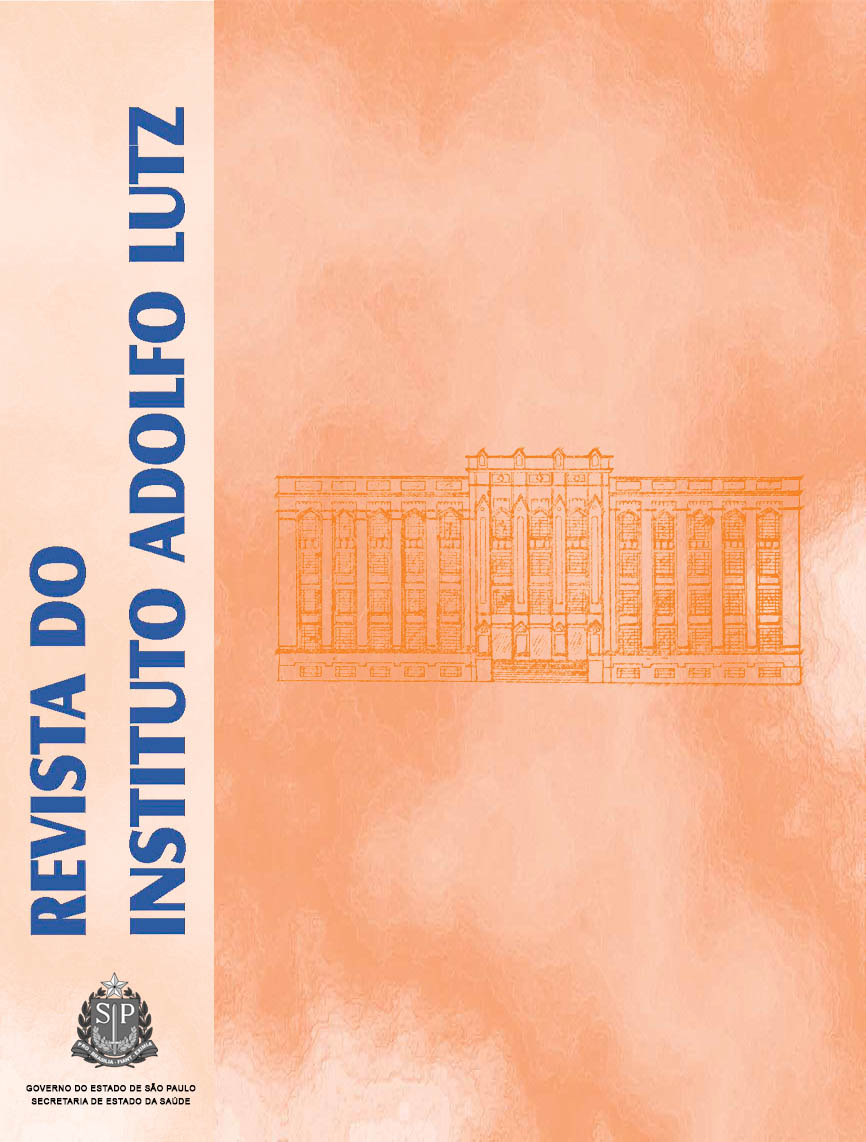Abstract
Blood lead and cadmium levels have been used to evaluate recent human exposure to these metals. Graphite Furnace Atomic Absorption Spectrometry (GFAAS) is the most suitable technique for lead and cadmium determinations in biological fluids due to its ability in detecting low concentrations of metals, and for using small amount of sample. The objective of this study was to establish and to validate a methodology for simultaneous determination of lead and cadmium in blood by GFAAS technique. Blood samples were diluted with Triton X-100 in HNO3, and a mixture of NH4H2PO4 and Mg(NO3)2 solutions was used as chemical modifier. The analytical conditions were optimized and the best pyrolysis and atomization temperatures were 500ºC and 1500ºC, respectively. For validation, certified reference materials NIST SRM 955b (Lead in bovine blood) and NIST SRM 966 (Toxic metals in bovine blood) were used. The evaluated parameters for lead and cadmium were: linearity (5.0 to 100.0 µg.L-1 and 0.3 to 3.0 µg.L-1), accuracy (99.9% and 97.7%), precision (RSD = 3% and 13%), detection limit (0.54 µg.L-1 and 0.06 µg.L-1), and quantification limit (1.8 µg.L-1 and 0.21µg.L-1), respectively. The proposed method is fast, sensitive and suitable for simultaneous determination of lead and cadmium in blood samples from populations with occupational or environmental exposure, including children.References
1. Falomir P, Alegría A, Barberá R, Farré R, Lagarda, M. Directdetermination of lead in human milk by electrothermal atomicabsorption spectrometry. Food Chem, 64: 111-13, 1999.
2. ATSDR, Agency for Toxic Substances and Disease Registry. Toxicological Profile for Cadmium,U.S. Department of Health andHuman Services. Atlanta, USA, 1998.
3. ATSDR, Agency for Toxic Substances and Disease Registry.Toxicological Profile for Lead, U.S. Department of Health and HumanServices. Atlanta, USA, 1999.
4. Parsons PJ, Geraghty C, Verostek MF. An assessment of contemporaryatomic spectroscopic techniques for the determination of lead inblood and urine matrices. Spectrochim Acta Part B, 56: 1593-604,2001.
5. Hállen IP, Jorhem L, Lagerkvist BJ, Oskarsson A. Lead and cadmiumlevels in human milk and blood. Sci Total Environ, 166: 149-155,1995.
6. Sturgeon RE. Graphite furnace atomic spectrometry andenvironmental challenges at the ultratrace level – a review. SpectrochimActa Part B, 52: 1451-57, 1996.
7. Zhang ZW, Shimbo S, Ochi N, Eguchi M, Watanabe T, Moon CS, et al.Determination of lead and cadmium in food and blood by inductivelycoupled plasma mass spectrometry: a comparison with graphite furnaceatomic absorption spectrometry. Sci Total Environ, 205: 179-87,1997.
8. Acar O. Determination of cadmium and lead in biological samples byZeeman ETAAS using various chemical modifiers. Talanta, 55: 613-622, 2001.
9. Yen CC, Chen WK, Hu CC, Wei BL, Chung C, Kuo SC. Leaddetermination in whole blood by graphite furnace atomic absorptionspectrometry.Atom Spectroscopy, 18(2): 64-9, 1997.
10. Correia PRM, Oliveira E, Oliveira PV. Simultaneous determination ofCd and Pb in foodstuffs by electrothermal atomic absorptionspectrometry. Anal Chim Acta, 405: 205-11. 2000.
11. Deval A, Sneddon J. Determination of cadmium and lead in bloodreference samples by simultaneous graphite furnace atomic absorptionspectrometry. Microchem J, 52: 96-100, 1995.
12. Freschi GPG, Dakuzaku CS, Moraes M, Nóbrega JA, Neto J A G.Simultaneous determination of cadmium and lead in wine byelectrothermal atomic absorption spectrometry. Spectrochim ActaPart B, 56: 1987-93, 2001.
13. Hoening M, Cilissen A. Performances and practical applications ofsimultaneous multi-element electrothermal atomic absorptionspectrometry the case of SIMAA 6000. Spectrochim Acta Part B, 52:1443-49, 1997.
14. Campillo N, Viñas P, García IL, Córdoba MH. Rapid determination oflead and cadmium in biological fluids by electrothermal atomicabsorption spectrometry using Zeeman correction. Anal Chim Acta,390: 207-215, 1999.
15. Brasil, Leis, Decretos, etc. Secretaria de Segurança e Saúde no Trabalho.Portaria no 24, de 29 de dezembro de 1994. Aprova o texto da NormaReguladora no 7 (NR-7) – Exames Médicos. Diário Oficial da União,Brasília, 30 de dezembro de 1994. Seção I.
16. ACGIH, American Conference of Governamental Industrial Hygienists.Limites de exposição (TLVs) para substâncias químicas e agentes físicose índices biológicos de exposição (BEIs), Ohio, USA, 2003. traduçãoABHO – Associação Brasileira de Higienistas Ocupacionais. São Paulo,SP, 2003. 219 p.
17. CDC, Centers for Disease Control. Screening young children for leadpoisoning: guidance for state and local public health officials.[www.cdc.gov/nceh/lead/guide/1997/pdf]. Acesso em: junho 2003.
18. Chaudhary-Webb M, Paschal DC, Elliott WC, Hopkins HP, GhaziAM, Ting BC, et al. ICP-MS Determination of lead isotope ratios inwhole blood, pottery, and leaded gasoline: lead sources in Mexico City.Atom Spectroscopy, 19(5): 156-163, 1998.
19. Furman A, Mehmet L. Analysis of lead body burden in Turkey. SciTotal Environ, 234: 37-42, 1999.
20. Parsons JP, Slavin W. A rapid Zeeman graphite absorptionspectrometric method for the determination of lead in blood.Spectrochim Acta,48B (67): 925-39, 1993.
21. Draoper NR, Smith H. Applied Regression Analysis, 3o ed., New York:John Wiley; 1998. 706 p.
22. ISO/CD 13812: General Guidelines for Atomic AbsorptionSpectrometry – Graphite furnace analysis, 1996. 63 p.
23. Currie LA. Nomenclature in evaluation of analytical methods includingdetection and quantification capabilities - Pure Appl Chem, 67: 1669– 1723, 1995.
24. Brasil, INMETRO. Orientações sobre validação de métodos de ensaiosquímicos. DOC-CGCRE-008 – revisão 01 – março 2003. [http://www.inmetro.gov.br]. Acesso em: junho 2003.
25. Burguera JL, Burguera M, Rondon CE. Determination of lead in wholeblood and urine by electrothermal atomic absorption spectrometryusing various chemical modifiers. Atom Spectroscopy, 18(3): 109-113, 1997.

This work is licensed under a Creative Commons Attribution 4.0 International License.
Copyright (c) 2005 Instituto Adolfo Lutz Journal
